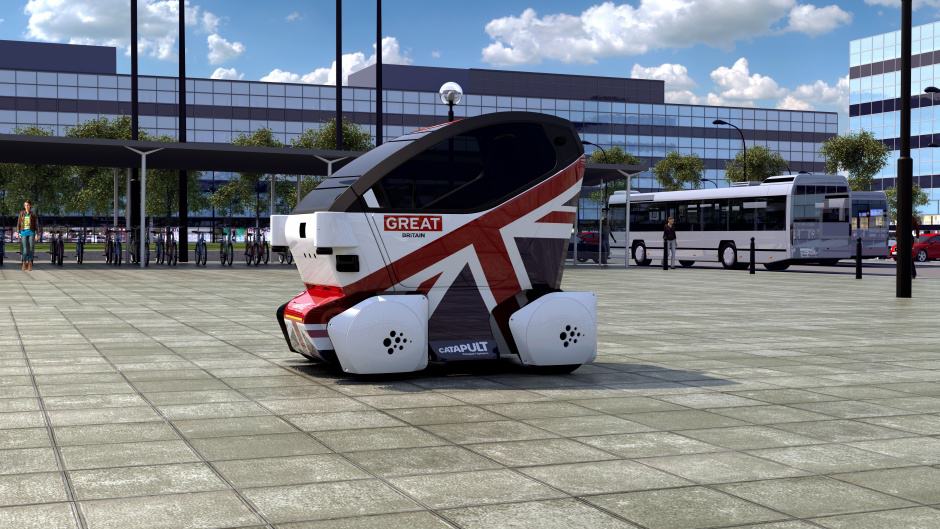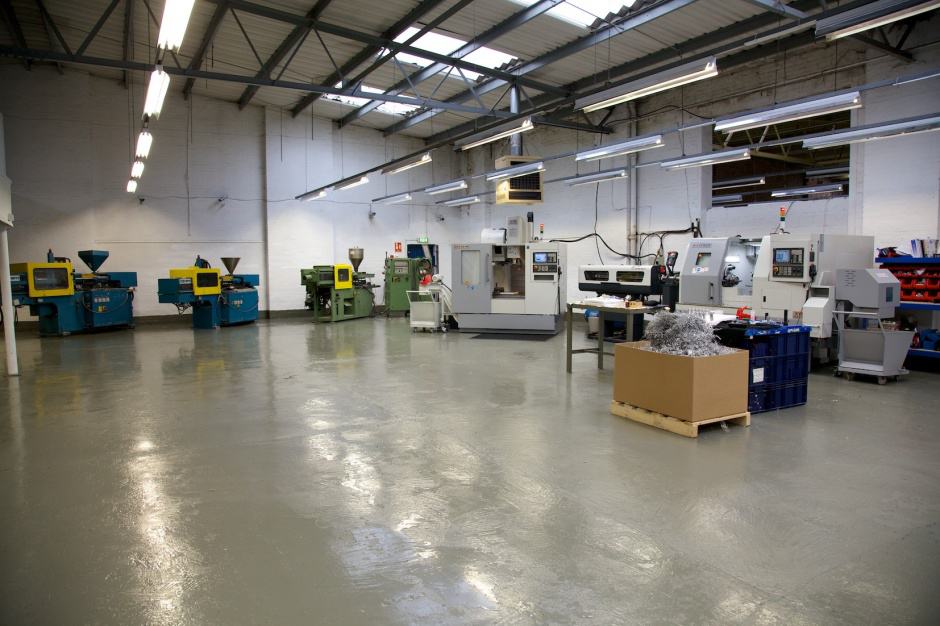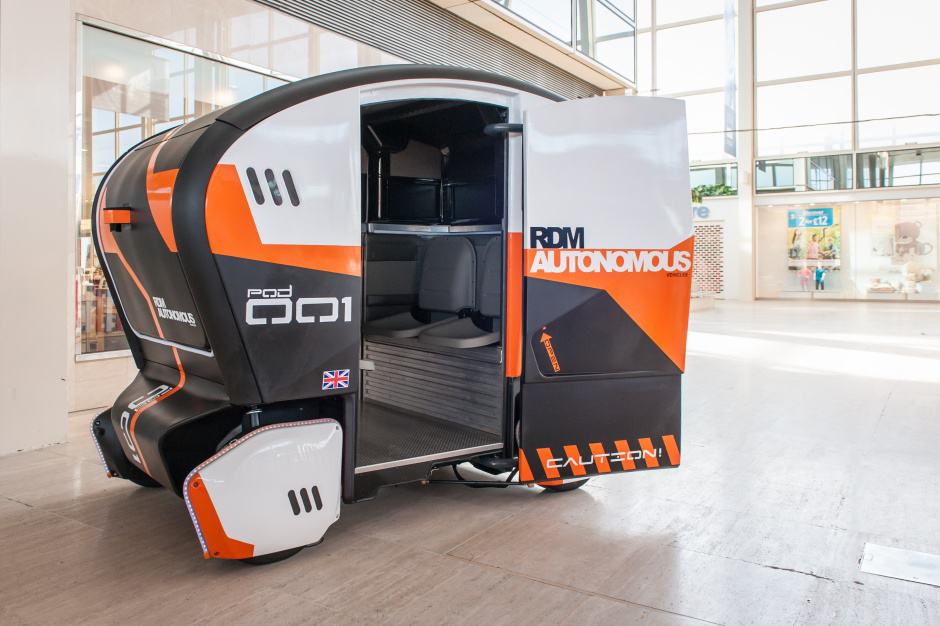.
The West Midlands has long been home to some of the UK’s most innovative manufacturers. But one of the most interesting names to emerge in recent decades is Coventry engineering group RDM, which, over the past two decades, has established something of a name for itself as a key supply-chain partner for the automotive, aerospace, medical, rail and renewable sectors.

Most recently, the group has emerged as a major player in the UK’s driverless vehicle sector.
The firm cut its autonomous teeth in the LUTZ (Low Carbon Urban Transport Zone) Pathfinder project – an initiative led by the Transport Systems Catapult that saw it develop a number of two-seater driverless pod cars that are being used in one of the UK’s first public trials of fully autonomous vehicles. Even more recently, it unveiled a scaled-up version of the LUTZ pod, a four-seater autonomous vehicle named Pod Zero, a driverless pod specially designed for public spaces, which the firm is in the process of showcasing to interested parties around the world.
The Engineer recently caught up with the group’s autonomous vehicles programme director Miles Garner, and asked him about the firm’s bold plans to become a key UK manufacturer in this rapidly emerging sector.
The LUTZ pods were really one-off commercial prototypes, so we decided to make our own commercial version
“We won the contract about two-and-a-half years ago to build the LUTZ pods,” said Garner, “us and Oxford University, who worked on the sensor pack.”
The project drew to a close in October with a public demonstration, but the wider UK Autodrive programme it was a part of will build on the lessons learned over 18 months of LUTZ trials. The pods used an autonomy software system called Selenium, developed by Oxford University spin-out Oxbotica. RDM designed and built the vehicles, but the experience merely whetted its appetite to explore the driverless market. The result is Pod Zero, designed from the ground up by RDM, with a wholly owned hardware and software system.
“On the back of LUTZ we actually took it upon ourselves to commercialise the proposition,” said Garner. “The LUTZ pods were really one-off commercial prototypes, so we decided to make our own commercial version, totally different to the LUTZ, and also using our own autonomous control system as well.”

RDM currently has capacity to manufacture about 200 pods a year at its Coventry headquarters, but CEO David Keene has hinted the company could move to a new purpose-built facility nearby. However, expansion is contingent on demand for Pod Zero.
“It really does depend on the market,” said Garner. “We’re currently having lots of conversations with lots of governments and companies that want to offer the pods around. These can be trials of two or three vehicles, or up to about a hundred.”
One of those conversations is with investors in the Middle East looking to use the pods to transport guests around a massive indoor shopping complex. The region is already home to the world’s biggest mall in Dubai, with several more gigantic shopping projects planned. Electrically powered pods would be a suitably high-tech way to transport customers around these retail megalopolises. With airports and university campuses also strong contenders for adoption, it’s not hard to see why RDM has pursued the autonomous route, despite the challenges involved.
“On the actual pod itself, the learning curve was quite steep,” Garner explained. “As a company in the past we’ve actually built cars from the ground up, so we’ve got lots of experience with building the different aspects of the vehicle. But when we took it upon ourselves to carry out our own autonomous system, we had to take on a lot of people.”
As well as investing heavily over the past number of years in the technology underpinning Pod Zero, RDM also recently opened a new Advanced Engineering Centre. A £400,000 investment ensured the facility was fitted out with the latest equipment, including two state-of-the-art CNC machines, three injection moulding machines, a three-axis router, and a laser engraver. Engineers there also have access to the latest CADCAM software, working with customers from early development through to finalised designs. The centre enhances RDM’s ability across a range of services, from prototyping and electronics, to machining and telematics.

“We took on the centre because we found that we’re picking up, primarily from JLR, lots of prototyping work,” said Garner. “Plus, also, we carried out quite a few technology rebuilds.”
One of those rebuilds included the Land Rover Defender Leopard II, where RDM fitted seven of the iconic off-road vehicles with electric drivetrains. The Leopard is propelled by a 70KW 330Nm switched reluctance drive motor, powered by a passively cooled lithium-ion P04 27KW/hour 300V battery mounted in the former engine compartment.
The experience with Land Rover helped convince RDM that investment in an Advanced Manufacturing Centre would be a worthwhile endeavour, and also helped develop its expertise around electrical vehicles. The 20,000ft2 centre officially opened in 2014, providing the company with a dedicated facility to take on ambitious new vehicle builds, as well as development work on a host of components, primarily for the automotive sector.
“We’re able to do our own carbon fibre, which we do for JLR and also for Aston Martin,” said Garner. “For interiors, we have a trim shop now, so we do lots and lots of trim.”
Although about 80 per cent of revenues still come via automotive, RDM’s capabilities meant it has branched out into other areas of manufacturing, albeit at the behest of one of its biggest automotive clients.
“There’s a torch we produce that is very high-end quality,” said Garner. “It’s a Maglite-type torch that is offered as a premium accessory for JLR vehicles, and we actually build that ourselves. We’ve got the turning machine, the five-axis CNC machine, so we have all the capabilities to do that in-house.”
Out of the whole world, I’d say the Asia-Pacific Rim region is the biggest opportunity for us
While RDM’s UK capabilities continue to expand, the company is also looking at options further afield. Autonomous technology is advancing rapidly and the company is in a great position to capitalise on the burgeoning market. But the really big opportunities are likely to lie beyond the confines of the UK.
Garner is enthusiastic about unlocking the potential value of markets in the Asia-Pacific region. Growth there may have slowed compared to a decade ago, but it still far outpaces that of Europe and the US.
“We’ve had lots of interest in the US, also over in the Far East and the Middle East,” said Garner. “But Australia would really be a perfect type of location to actually build a factory. It would help us to take on the whole Asia-Pacific Rim area if we had a place in Australia. As an engineer, it really is an open door. There’s lots of help from the government, especially the South Australia government… out of the whole world, I’d say the Asia-Pacific Rim region is the biggest opportunity for us.”




JLR teams with Allye Energy on portable battery storage
This illustrates the lengths required to operate electric vehicles in some circumstances. It is just as well few electric Range Rovers will go off...